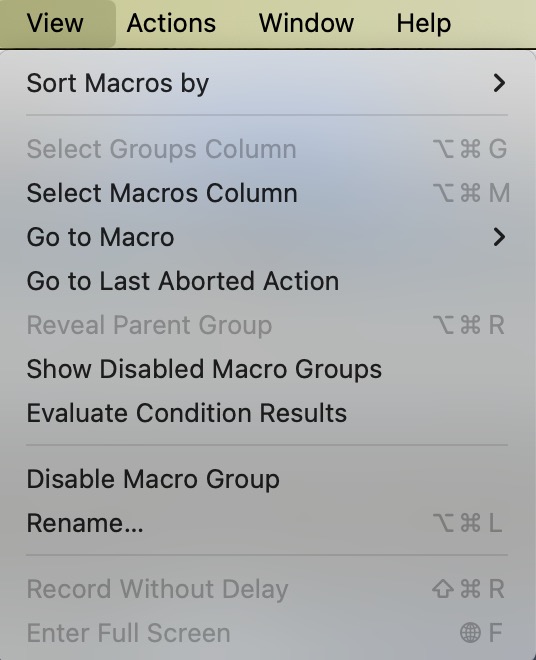Great question. I got bit by this experimenting and thankfully just remembered that I had done that. I am really trying to understand what I don't understand and the reason for it. I don't understand what benefit it is doing by adding that option versus just disabling the macro group which you can know and quickly see what is going on.
I am seeing things more here and yes I have depended on that transient state and wouldn't need to see that generally speaking though in the editor and I can see what you mean with the overhead load having to update the Keyboard Maestro editor everytime when you switch between apps.
Maybe something like

"Evaluate Condition Results" in the view menu which you have to turn on or click on a macro to turn on since that creates more overhead and then a green dot or something if it is active but that might be a lot more overhead than would be good.
Evaluate Macro Group Results (More CPU Usage Not Recommended).
Anyway I see you point now and though I still don't get the use case for it versus just unchecking enable for the macro group, I am not opposed to options and I am sure there is still something more that it helps that I am not seeing.
https://wiki.keyboardmaestro.com/action/Activate_Macro_Group?redirect=1
"![]() Note that activation state is a transient state, and is not the same as enabled state (which is semi-permanent and displays in the editor). This action will not change the display in the editor even when it activates or deactivates the macro group. See Macro Activation for more information."
Note that activation state is a transient state, and is not the same as enabled state (which is semi-permanent and displays in the editor). This action will not change the display in the editor even when it activates or deactivates the macro group. See Macro Activation for more information."
That is good information, and maybe some more information like if you switch away from applications, or even quitting that application that you have set to "Available in these applications" app and come back to it will not reactivate the macro group, nor closing Keyboard Maestro. Only quitting Keyboard Maestro Engine and then restarting will make that macro group active again. Then, explicitly state the reasons why you would use this over disable macro group and give a recommendation for using it.
Perhaps that is overkill, but it would certainly have helped me a bit more. It seems like it is really to do more with pallets, which I don't hardly use, and that is the use case for them. When would you use Deactivate over Disable for a macro group?
One thing I just found that might be a use case between the Deactivate over Disable is when you deactiveate on one mac that is syncing macros it only does it for that computer but when you do disable it does it for both computers which of course makes sense and what I have been already doing for a while. Might be helpful to add some of those little tips to the Wikipage.